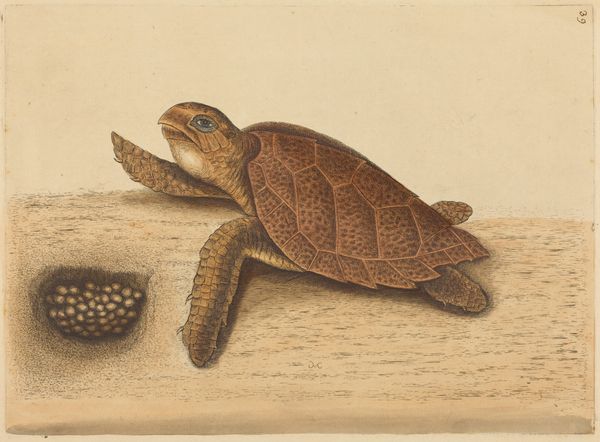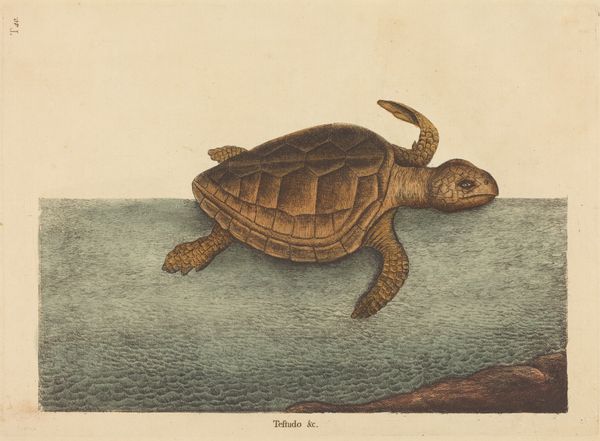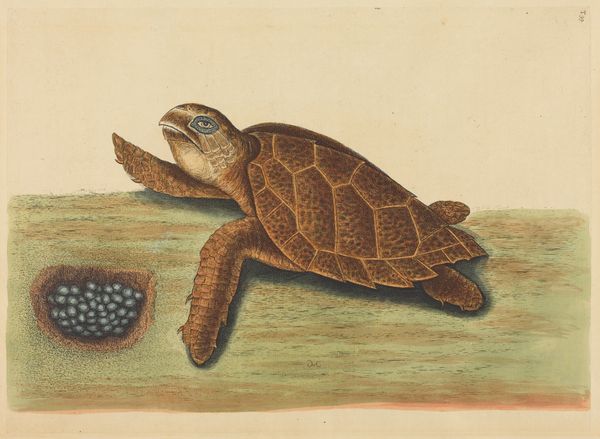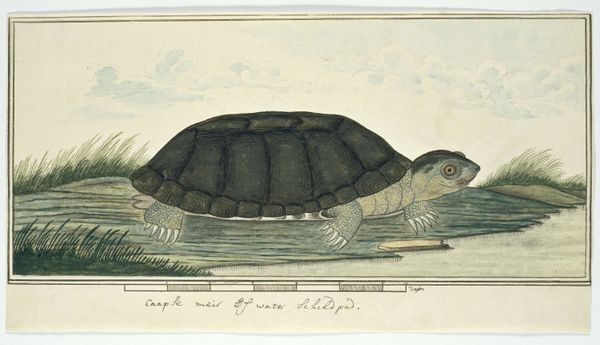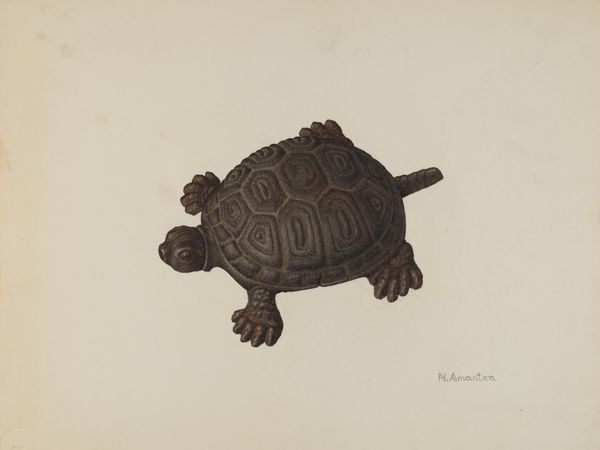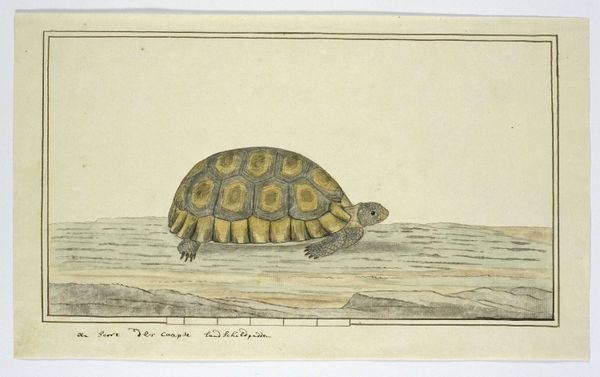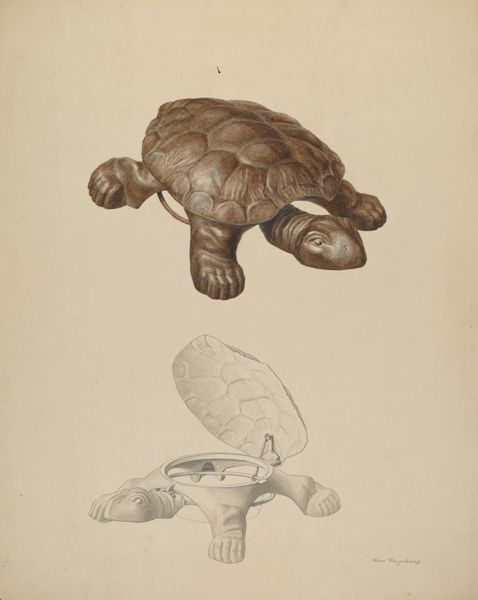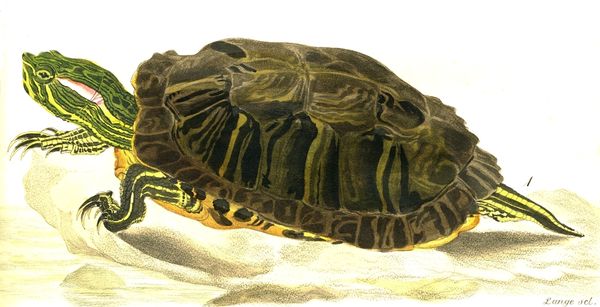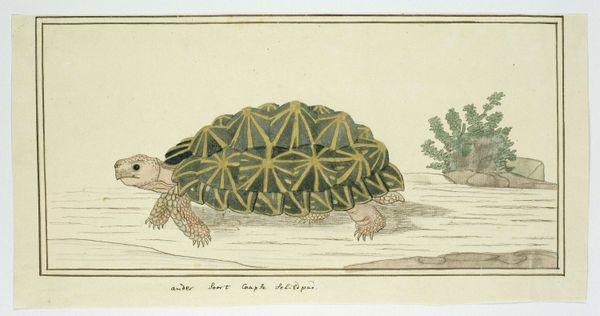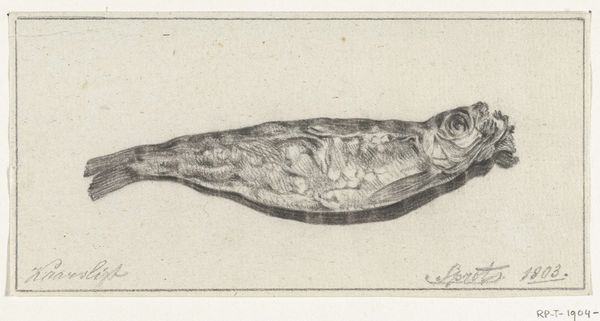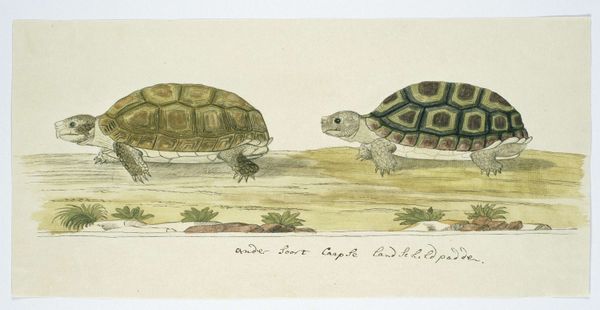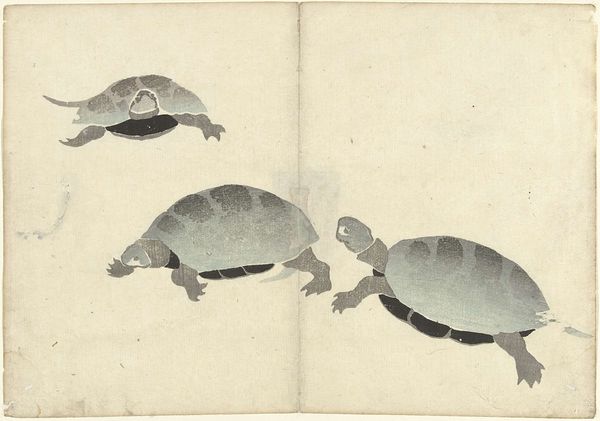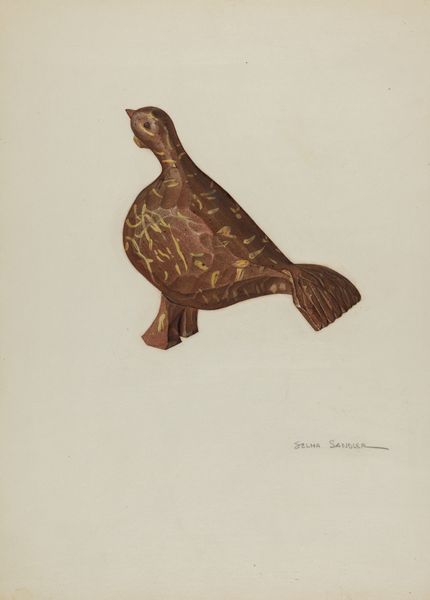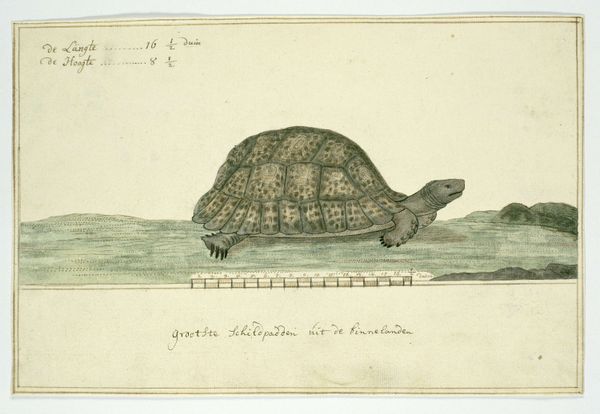
drawing, watercolor, pencil
#
drawing
#
pencil sketch
#
landscape
#
charcoal drawing
#
watercolor
#
pencil drawing
#
pencil
#
watercolor
#
realism
Dimensions: height 125 mm, width 287 mm
Copyright: Rijks Museum: Open Domain
Curator: Before us is "Turtle Captured by the Crew of the Boat," a drawing made in 1778 by Louis Ducros, primarily using pencil and watercolor. It currently resides here at the Rijksmuseum. Editor: The muted tones and the creature’s still pose evoke a rather somber, almost tragic feeling. It's stark against the white background. Curator: Indeed, the somberness you perceive may well connect to a period when natural history and colonial practices intertwined problematically. Ducros made this drawing, likely from life, documenting a captured sea turtle. Editor: Ah, yes, placing it in the context of colonial expeditions brings a sharper awareness to its role. One begins to see it as more than an exercise in form and representation, but as a potential trophy. Do the sharp, delicate lines made with pencil, in your view, serve a similar purpose? The drawing is so meticulous. Curator: The precise rendering undoubtedly echoes the scientific inclination of the era—a drive to classify and record nature. Yet, the artist’s decision to use watercolor softens the piece. Its subdued realism provides a humanizing perspective. It complicates a straightforward reading of objectification. Editor: I can agree that watercolor contributes a softness that invites contemplation of the animal. Do you think the whiteness of the surrounding negative space intensifies the feeling of displacement? It emphasizes that this is not its natural habitat. Curator: That's insightful. The absence of an environmental context—the stark whiteness you noted—accentuates the turtle's isolation. It strips away its agency. By doing so, Ducros forces us to confront humanity’s dominant position over nature. Editor: Considering this was made in 1778, its realism contrasts against pure symbolism. Ducros is trying to show, not tell, making it surprisingly sophisticated for its time. Curator: This realism does allow it to operate simultaneously as both a scientific record and a work carrying latent social and environmental narratives. The duality underscores how visual documents of that era served varied interests, aesthetic, scientific, and colonial. Editor: Thank you, my perspective on Ducros' choice of materials and their overall compositional impact, has definitely broadened. Curator: And I better understand how to see Ducros' image less as a detached depiction of nature, and more as an object of our historical interaction with it.
Comments
No comments
Be the first to comment and join the conversation on the ultimate creative platform.
